by C. Elkins, OK Math & Reading Lady
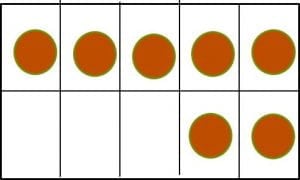
Do you see 3 + 4 =7 or perhaps 5 + 2 = 7? Maybe you see 3 + 2 + 2 = 7.
I have been using dot cards for many years with K-2 students as part of my Number Talks routine. I’d like to share some ways to follow this routine using both ten frame dot cards and random dot cards. These are also easy to use via distance learning situations.
If you haven’t tried this before, you are in for a treat! It is so nice to listen how students process their thinking. I never cease to be amazed at how developed a child’s thoughts can be expressed . . . and how many children take this as a challenge to see how many ways a dot picture can be explained. I often feel I learn so much about my students capabilities (or sometimes the deficits) during this type of Number Talk session. Look for my recommended links below (FREE).
What are the benefits?:
- Students gain the ability to subitize (tell a quantity without physically counting).
- Students gain number sense by noticing more dots, less dots, patterns aid counting, the same quantity can be shown different ways, sequencing numbers, skip counting, and many more.
- Students gain the ability to see many different ways a number can be composed or decomposed which assists with addition and subtraction facts.
- Students gain practice with strategies such as counting on, add/subtract 1, doubles, near doubles, adding 9, adding 10, missing addends, and equal groups.
- Teachers are able to observe students’ processing skills in an informal math setting.
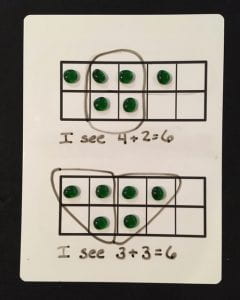
Materials needed:
- Ten frame dot cards: This set is FREE from TPT and includes ten frame cards as well as random dot cards. Great find!! https://www.teacherspayteachers.com/FreeDownload/Number-Talks-Early-Level-Starter-Pack-10-Frames-and-Dot-Cards-4448073
- Random dot cards (not on ten frames)
- Here is a FREE set of random dot cards from TPT with a good starting set. https://www.teacherspayteachers.com/FreeDownload/Subitizing-Dot-Cards-2042252
- You can create your own cards with dot stickers (or bingo stamps) on large index cards or paper plates
General procedures:
- Decide how you are going to show the cards:
- Show to students who are seated near the teacher?
- Show to students via a document camera projected to a screen?
- Show to students online with a split screen?
- Show to students via a ppt?
- Depending on the grade level, you may want to flash the card quickly to encourage subitizing or shorten/extend the time the card is shown.
- To encourage subitzing to 5, I recommend flashing the card for a couple of seconds for dots from 1-5 for all age groups.
- Depending on the number of dots and the complexity of the dots, you may choose to shorten or extend the time you display the card for amounts more than 5. The goal is for the students to look for patterns, equal groups, doubles, dots making squares, rectangles, or triangles, determine a quantity, and then explain how they arrived at that amount.
- Students put a quiet thumbs up when they have decided the quantity. They should not say the amount outloud at this point. This shows respect for others who are still processing.
- The teacher observes to see who is counting, who is participating, who uses fingers, who is quick /slow, etc.
- Teacher asks random students, “How many dots?”
- Teacher asks random students, “How did you see them?”
- Results can be stated verbally or written down by the teacher.
Here are some examples with sums less than 10:
- How do you see 9?
- How do you see 8?
- I can imagine 1 counter moving to help me think of 4 + 4 (bottom image).
Here are examples using 2 ten frames to illustrate quantities greater than 10:
- I try to look for doubles (6 + 6).
- I see another use of doubles (5 + 5)
- I use the near doubles strategy to think 6 + 6 and add one more since 7 is one more than 6. I could also try 7 + 7 and then take one off.
Next post: I will feature ways to use the random dot cards for your Number Talk sessions.
Do you need professional development for yourself, your team, your school? Please contact me and we can work out a plan that fits your needs. I can provide personal help via email or Zoom all the way up to custom made webinars or power point presentations. Let me know!
Do you know students who need extra help at home via online tutoring? See my link for Varsity Tutors and mention my name.
Do you want to do some online tutoring yourself at a time that works with your schedule? See my link for Varsity Tutors and mention my name. Feel free to ask me questions as well.

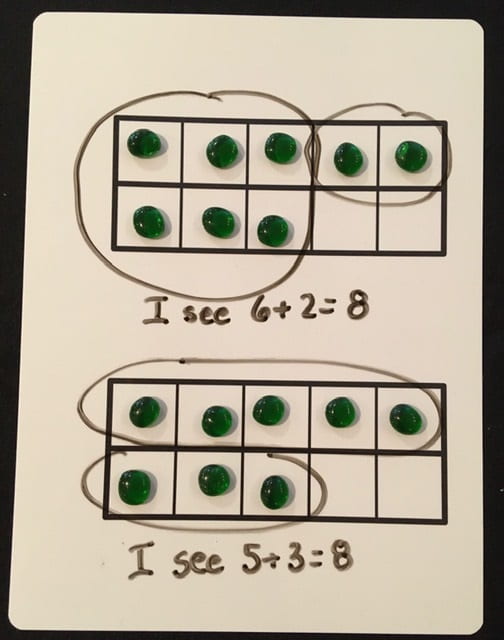
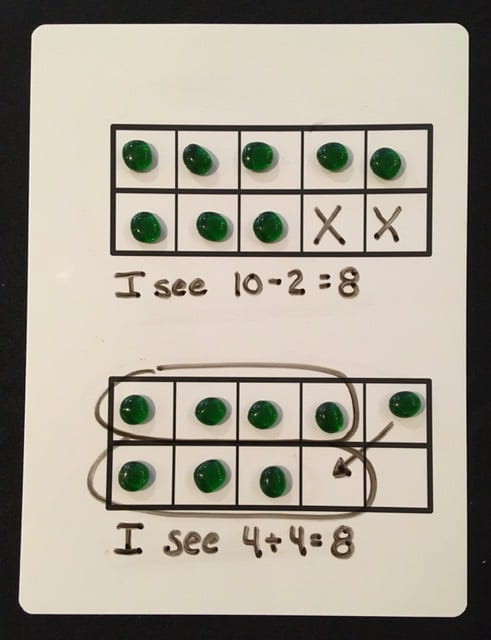
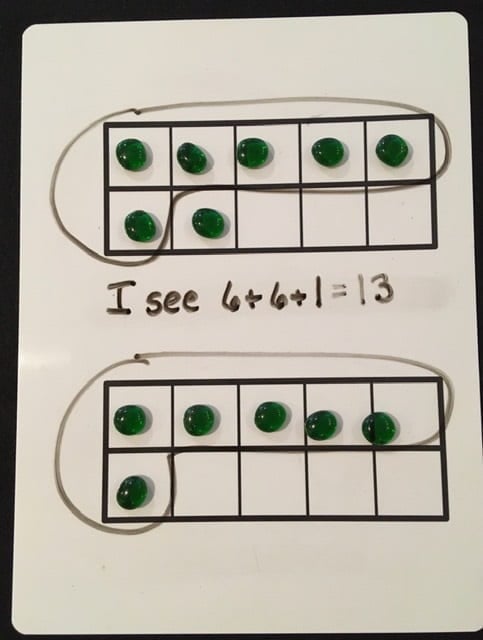


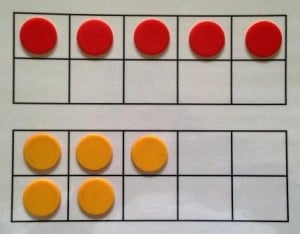 Then stay tuned because ten frames can also be a great tool for addition, subtraction, multiplication, and division.
Then stay tuned because ten frames can also be a great tool for addition, subtraction, multiplication, and division.